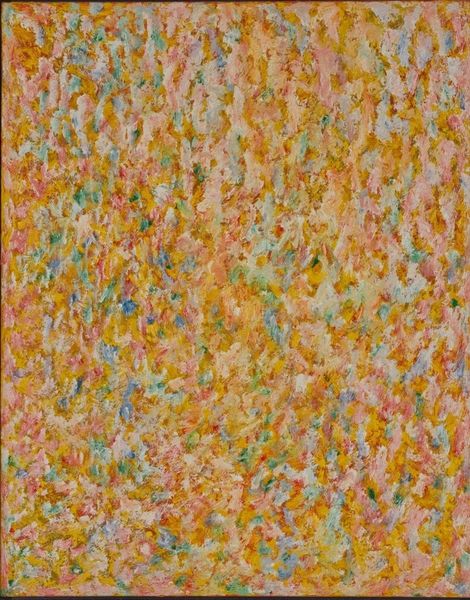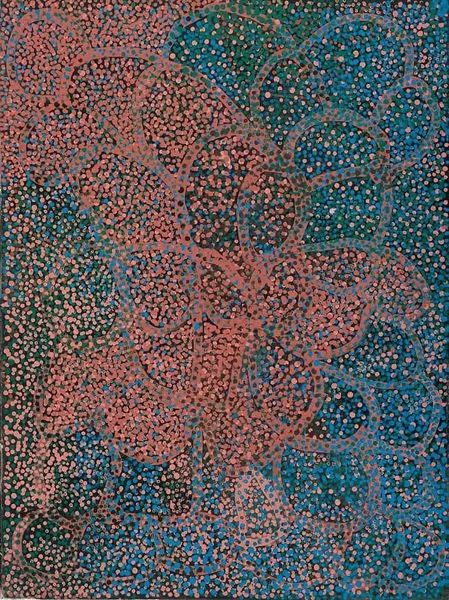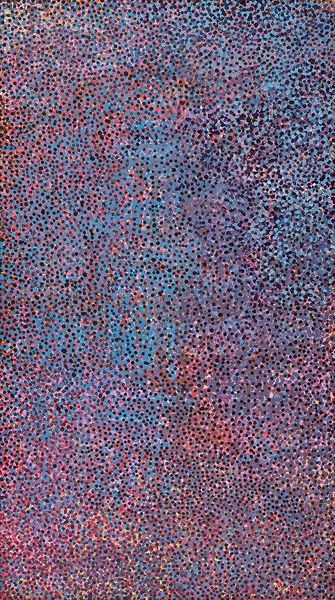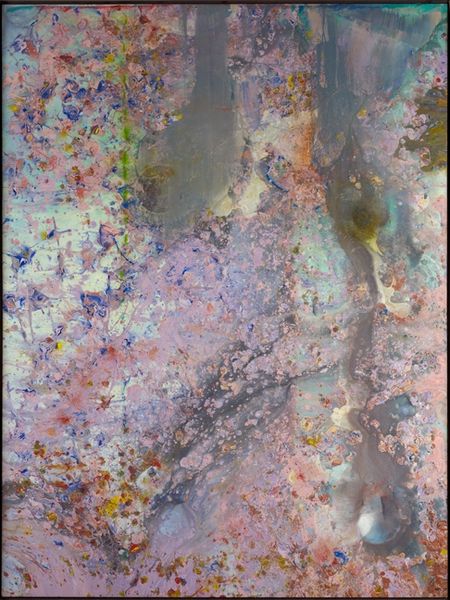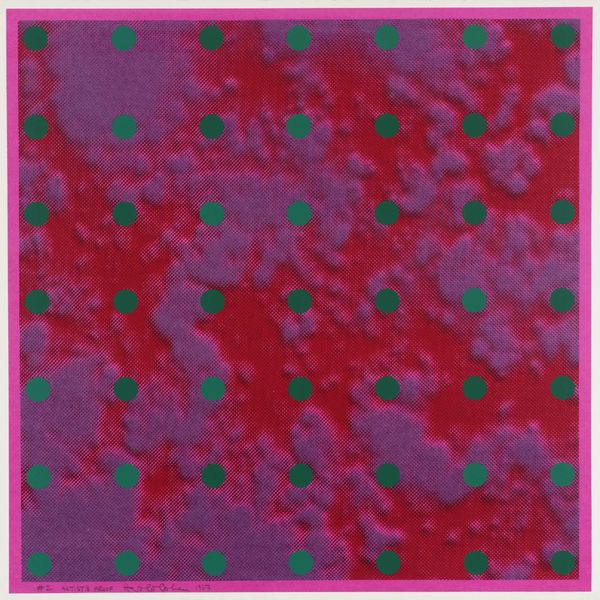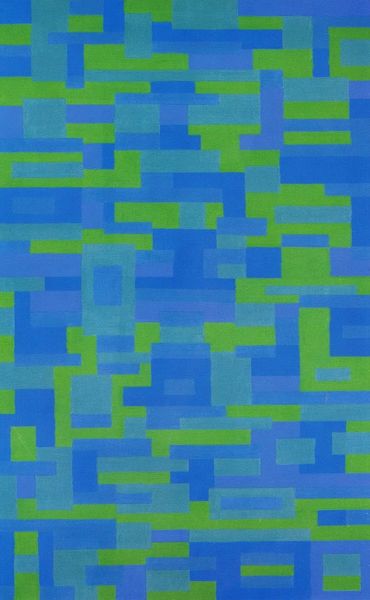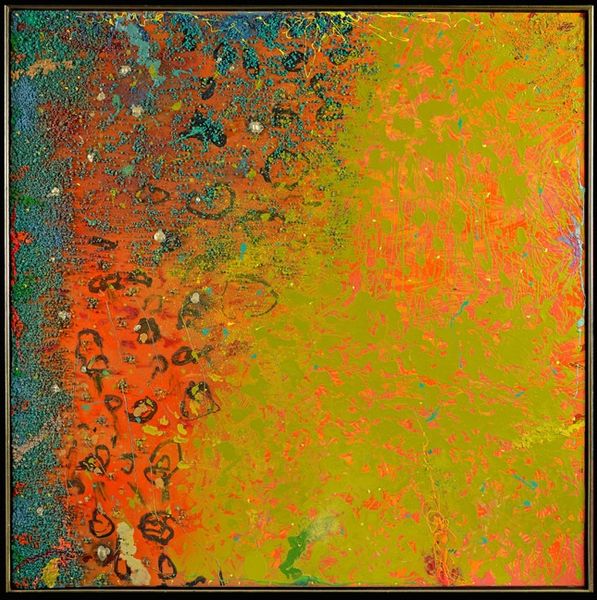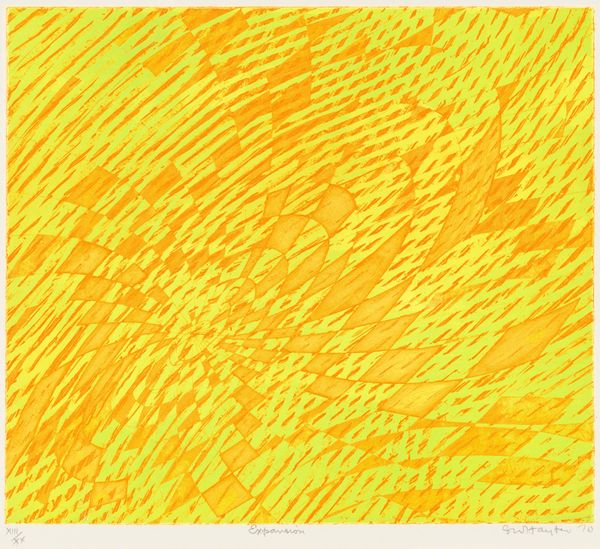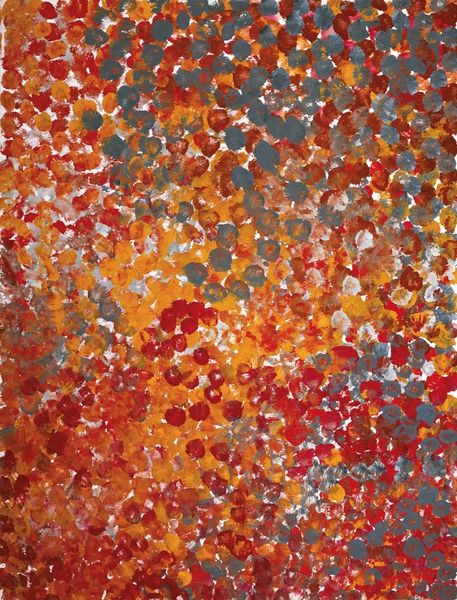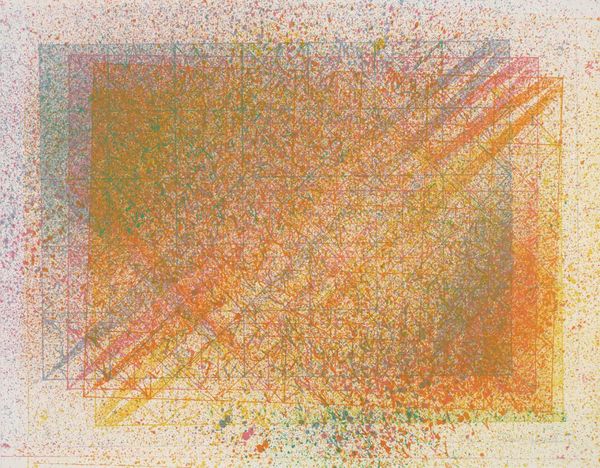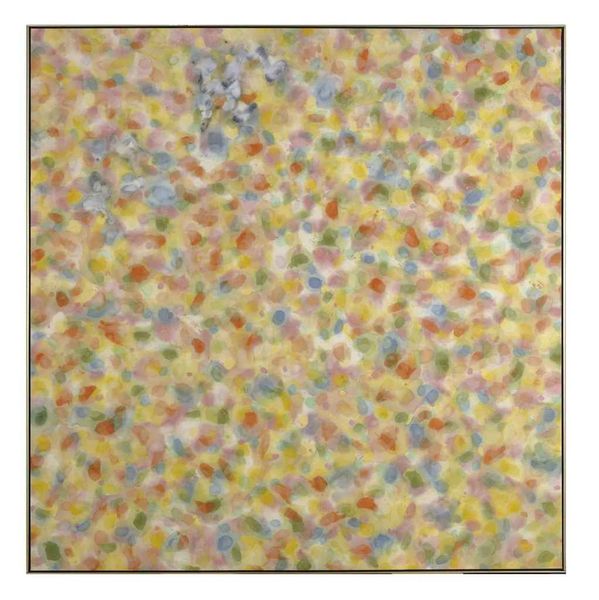
painting, acrylic-paint
#
contemporary
#
organic
#
painting
#
acrylic-paint
#
abstract pattern
#
organic pattern
#
abstraction
Copyright: Emily Kame Kngwarreye,Fair Use
Curator: I am immediately struck by the almost vibrating field of ochre. The close-valued hues and impasto texture cause such visual busyness. Editor: We’re looking at “Wildflower,” a 1994 painting by Emily Kame Kngwarreye, an artist from the Utopia region of the Northern Territory, Australia. Kngwarreye came to painting late in life but quickly became a significant figure in contemporary Indigenous art. Curator: It seems almost infinitely expansive, despite what I imagine to be the modest scale of the canvas. The patterns, almost cellular in appearance, hint at the microscopic world and explode outward. Editor: Her work sits at an interesting intersection. It's celebrated for its abstract qualities, aligning it with international movements like Colour Field painting, while also being deeply rooted in the artist’s Anmatyerre culture and her connection to the land. It came to international attention partly due to dealer networks and interest in ‘primitive’ art. Curator: Absolutely. You can observe how the repetitive mark-making builds toward a dense, overall texture—it's both considered and intuitive, reflecting a formal rigor but resisting any rigid geometry. The title would seem to imply organic subject matter as well. Editor: The "Wildflower" series, particularly from this period, moved away from explicitly depicting ancestral stories or mapping specific locations towards looser, more atmospheric impressions of the Australian landscape after rain. Her paintings and place within Indigenous art have become sources of debate around authenticity and the global art market’s exoticization of Aboriginal culture. Curator: Regardless of reception, she clearly mastered colour relationships, achieving great complexity using a limited palette. These individual dots seem to breathe together. Editor: Indeed. The power of "Wildflower" lies not just in its aesthetic appeal, but in its engagement with complex questions about cultural representation and the market forces that shape our understanding of art. Curator: It serves as a reminder to appreciate the immediate visual experience and critically examine its place within broader historical and cultural contexts. Editor: An exquisite example of form meeting formidable content.
Comments
No comments
Be the first to comment and join the conversation on the ultimate creative platform.

